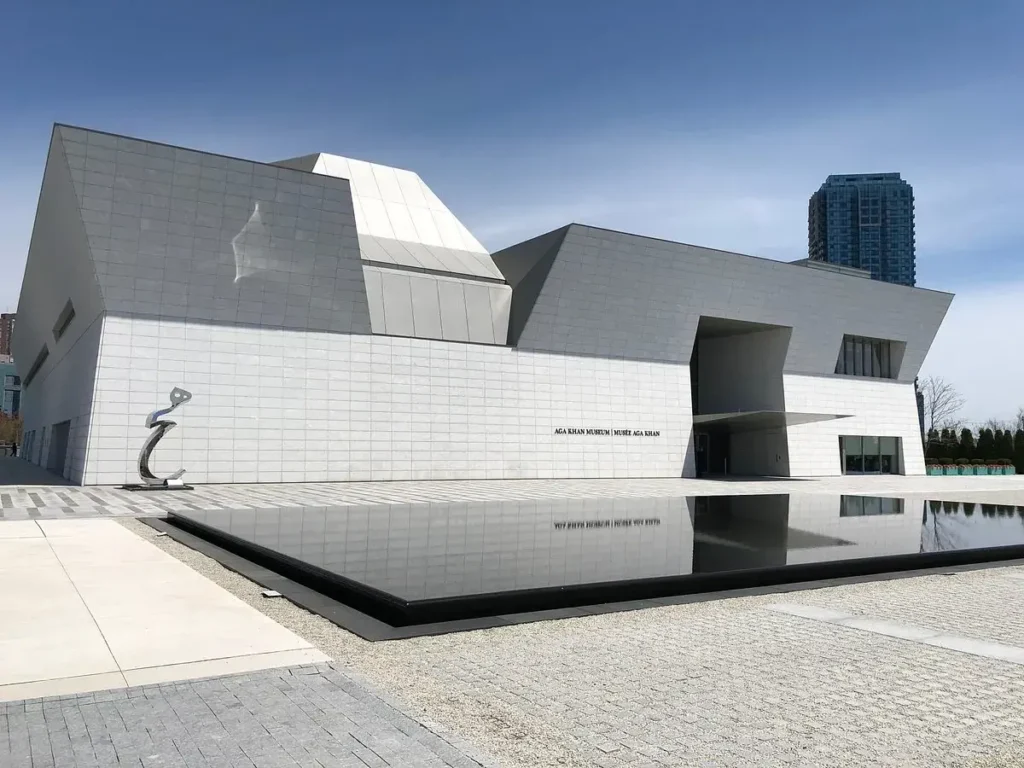
Nestled in the heart of North York, Ontario, stands the Aga Khan Museum, a cultural gem that houses over a thousand years of Islamic art and heritage. As one of the few museums in North America devoted to Islamic art, it offers a unique and profound exploration of Islamic civilizations and their contributions to the world.
The museum’s impressive collection, ranging from intricate manuscripts to architectural fragments, not only illuminates the aesthetic beauty of Islamic art but also provides insightful understanding of the diverse cultures within the Islamic world. With a focus on fostering dialogue and promoting tolerance, the Aga Khan Museum offers an enriching experience that goes beyond conventional museum visits.
There’s no doubt that this museum holds significant cultural treasures, but what exactly makes it stand out among other cultural institutions? This question invites further exploration.
Exploring the Aga Khan Museum’s Exhibits
The Aga Khan Museum’s exhibits offer a rich tapestry of Islamic art and culture, providing visitors with a deep insight into the historical and contemporary significance of these works. Expertly curated, each exhibit presents a unique narrative, transforming the museum into a vibrant dialogue of past and present.
From intricate textiles to monumental sculptures, the museum’s diverse collection reflects the vast geographic expanse and rich cultural heritage of the Islamic world. This immersive encounter not only cultivates a deeper understanding of Islamic arts but also fosters a sense of shared human experience, regardless of cultural or religious backgrounds.
The museum serves as a bridge, encouraging cultural exchange and highlighting the interconnectedness of our global community.
Understanding Islamic Art and Culture
Building on this exploration of the Aga Khan Museum’s exhibits in North York, it is crucial to delve deeper into the essence of Islamic art and culture, which is fundamentally characterized by its diversity and complexity, reflecting the multifaceted nature of the Islamic world.
Islamic art, spanning over 14 centuries, transcends geographical borders and political divisions, encapsulating a rich tapestry of cultural influences. It embraces a myriad of forms such as architecture, calligraphy, ceramics, textiles, and metalwork.
Islamic culture, on the other hand, extends beyond the artistic domain, encompassing social customs, intellectual traditions, and spiritual practices. These elements, interwoven with historical contexts, create a vibrant mosaic of Islamic identity. Understanding this allows for a more profound appreciation of the Aga Khan Museum’s collections.





